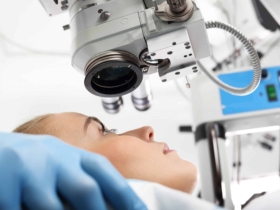Urinalysis is a standard diagnostic tool healthcare professionals use to assess and monitor various health conditions. Among the many components analyzed in a urine sample, squamous epithelial cells can be particularly telling. This article delves into what squamous epithelial cells in urine signify, their implications for health, and what further actions might be necessary based on their presence.
What are Squamous Epithelial Cells?
Squamous epithelial cells are flat, thin cells that form the outer layer of the skin and line various organs and cavities within the body, including the mouth, esophagus, and the urogenital tract. In the urinary system, these cells line the urethra, the tube that carries urine from the bladder to the outside of the body. Their primary function is to provide a barrier and protection against pathogens and physical damage.

How Do Squamous Epithelial Cells Enter Urine?
Squamous epithelial cells can enter the urine through various means. During urination, it is normal for some cells to shed from the lining of the urethra and mix with the urine. The number of squamous epithelial cells found in the urine can vary based on several factors, including hydration levels, hygiene practices, and the technique used during the urine sample collection. For instance, contamination from external genitalia can introduce more squamous cells into the sample, especially in women, due to anatomical differences.
Normal Versus Abnormal Levels
The presence of a few squamous epithelial cells in urine is typically considered normal and not a cause for concern. However, an elevated number of these cells might indicate underlying issues that require further investigation. Generally, urinalysis reports classify squamous epithelial cells as either few, moderate, or many.
- Few: Usually considered within normal limits, indicating minimal shedding or contamination.
- Moderate: Might suggest mild contamination or a slight increase in shedding.
- Many: Often warrants further examination, as it could indicate significant contamination or underlying pathology.
Causes of Increased Squamous Epithelial Cells
Several conditions and factors can lead to increased squamous epithelial cells in urine.
Contamination
The most common cause is contamination during sample collection. Poor hygiene, improper collection techniques, or use of non-sterile containers can introduce external squamous cells into the urine sample. This is particularly common in female patients, where cells from the vaginal area can easily mix with the urine.
Infection
Urinary tract infections (UTIs) are another common cause. Infections can cause inflammation and irritation of the urethral lining, leading to increased shedding of squamous cells. UTIs are typically accompanied by other symptoms such as frequent urination, pain or burning during urination, and cloudy or foul-smelling urine.
Inflammation and Irritation
Conditions causing chronic inflammation or irritation of the urinary tract, such as interstitial cystitis or urethritis, can also result in elevated squamous epithelial cells in the urine. These conditions often present with symptoms similar to those of a UTI, including pelvic pain and discomfort.
Medical Procedures
Recent medical procedures involving the urinary tract, such as catheterization or surgery, can temporarily increase squamous epithelial cells. This is usually transient and resolves as the urinary tract heals.
Diagnostic Implications
Detecting squamous epithelial cells in urine primarily serves as an indicator rather than a definitive diagnosis. When many of these cells are found, healthcare providers will typically consider the possibility of sample contamination first. A repeat urine test with careful collection techniques may be requested to rule out contamination.
If contamination is ruled out, further diagnostic steps may be taken to identify the underlying cause. These can include:
- Urine Culture: To check for bacterial growth and confirm the presence of a UTI.
- Imaging Studies: include ultrasound or CT scans to visualize the urinary tract and identify any structural abnormalities or inflammation.
- Cystoscopy: A procedure that uses a thin, flexible tube with a camera to inspect the interior of the bladder and urethra.
Treatment and Management
The treatment approach depends on the underlying cause identified.
Addressing Contamination
If contamination is the culprit, it is essential to educate the patient on proper urine sample collection techniques. This includes cleansing the genital area before collecting the sample and using a midstream urine collection method to minimize contamination.
Treating Infections
Antibiotics are the standard treatment for UTIs. The choice of antibiotic and duration of treatment depend on the severity of the infection and the specific bacteria involved. Completing the full course of antibiotics is crucial to ensure the infection is fully eradicated and to prevent recurrence.
Managing Chronic Conditions
For chronic conditions such as interstitial cystitis, treatment focuses on symptom management and improving quality of life. This may include medications to reduce inflammation, physical therapy to address pelvic floor dysfunction and lifestyle modifications such as dietary changes and stress management.

Post-Procedure Care
Monitoring and supportive care are typically sufficient if increased squamous epithelial cells result from a recent medical procedure. Patients are advised to stay hydrated, follow post-procedure care instructions, and report any unusual symptoms to their healthcare provider.
Preventive Measures
Preventing increased squamous epithelial cells in urine primarily involves maintaining good urinary hygiene and proper sample collection techniques. Here are some preventive measures.

- Proper Hydration: Drinking plenty of fluids helps flush out the urinary tract and reduces the concentration of cells in the urine.
- Good Hygiene: Regular washing of the genital area, especially before urine sample collection, helps minimize contamination.
- Correct Sample Collection: Using a midstream collection method and sterile containers can significantly reduce the risk of contamination.
- Regular Medical Check-ups: Routine health checks can help detect and address urinary tract issues early, preventing complications.
Conclusion
The presence of squamous epithelial cells in urine is a common finding in urinalysis and, in most cases, is not a cause for concern. However, when found in elevated numbers, it can indicate sample contamination, urinary tract infections, or other underlying conditions that may require further investigation and treatment. Understanding the implications of squamous epithelial cells in urine helps take appropriate measures to ensure accurate diagnosis and effective management of potential health issues. By maintaining good urinary hygiene and following proper sample collection techniques, patients can help minimize contamination and ensure the accuracy of their urine test results. Regular consultations with healthcare providers are essential for monitoring urinary health and promptly addressing concerns.
Also, Read The Following: Mouth Larva.














Got a Questions?
Find us on Socials or Contact us and we’ll get back to you as soon as possible.